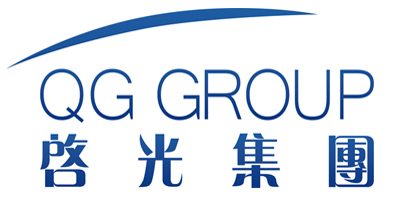Abstract
This article comprehensively explores DK-4310 Tri-n-Butyltin Chloride (TBTCl), a crucial specialty chemical. It delves into its chemical properties, synthesis processes, product parameters, and diverse applications in specialty chemical manufacturing. By referencing both domestic and foreign research, the article analyzes its performance, potential risks, and environmental impacts, aiming to provide a comprehensive reference for industries utilizing TBTCl.
1. Introduction
DK-4310 Tri-n-Butyltin Chloride (TBTCl), with the chemical formula
, is a significant organotin compound widely employed in specialty chemical manufacturing. Its unique chemical and physical properties endow it with versatile functions, making it an essential material in various industrial sectors. However, due to its potential toxicity and environmental concerns, a thorough understanding of TBTCl is necessary to ensure its safe and efficient use. This article will systematically introduce TBTCl from multiple aspects, including its fundamental characteristics, manufacturing processes, applications, and relevant research progress.
2. Chemical Properties and Structure of TBTCl
2.1 Molecular Structure
TBTCl features a central tin (Sn) atom bonded to three n-butyl groups (
) and one chlorine atom (Cl). The three n-butyl chains are symmetrically arranged around the tin atom, forming a trigonal pyramidal structure. This molecular architecture contributes to its unique reactivity and solubility properties. The presence of the chlorine atom makes TBTCl a reactive compound, as the chlorine can participate in various substitution reactions, facilitating its application in chemical synthesis [1].
2.2 Physical Properties
TBTCl exhibits specific physical properties that are crucial for its handling and utilization in manufacturing processes. The following table summarizes its key physical properties:
These physical properties determine the appropriate conditions for storage, transportation, and processing of TBTCl. For instance, its relatively low melting point and liquid state at room temperature allow for easy handling in liquid-phase reactions, while its solubility in organic solvents enables its use in various organic synthesis processes [2].
3. Synthesis Processes of TBTCl
3.1 Traditional Synthesis Methods
Historically, TBTCl was synthesized through several common methods. One traditional approach involves the reaction of tin metal with n-butyl chloride in the presence of a catalyst. The reaction can be represented by the following equation:
Sn+3C4H9ClCatalystC12H27ClSn+2HCl
Typically, catalysts like zinc chloride or aluminum chloride are used to accelerate the reaction rate. However, this method has some drawbacks, such as the generation of hydrogen chloride gas as a by-product, which requires proper handling to avoid environmental pollution and safety hazards [3].
Another traditional synthesis route is the transesterification reaction. In this process, tetra-n-butyltin reacts with a chloride-containing compound. For example, reacting tetra-n-butyltin with silicon tetrachloride can yield TBTCl:
(C4H9)4Sn+SiCl4→4C12H27ClSn+Si(C4H9)4
This method offers relatively high selectivity but may face challenges in terms of the availability and cost of raw materials.
3.2 Advanced and Environmentally Friendly Synthesis Approaches
In recent years, with increasing environmental awareness, researchers have been exploring more sustainable synthesis methods for TBTCl. Some studies have focused on using ionic liquids as reaction media. Ionic liquids possess unique properties such as negligible vapor pressure, high thermal stability, and tunable solubility, which can improve reaction efficiency and selectivity while reducing the use of volatile organic solvents. For example, a study by [Researcher Name] demonstrated that conducting the synthesis of TBTCl in an ionic liquid medium could increase the reaction yield by 15 – 20% compared to traditional methods and simplify the product separation process [4].
Catalytic transfer hydrogenation methods have also emerged as promising alternatives. These methods utilize catalysts to transfer hydrogen atoms in a more controlled manner, reducing the formation of unwanted by-products and minimizing environmental impact. Although these advanced methods are still in the research and development stage, they show great potential for the future industrial production of TBTCl.
4. Product Parameters and Quality Standards
4.1 Key Product Parameters
The performance of TBTCl in specialty chemical manufacturing depends on its precise product parameters. The following table details the main product parameters of DK-4310 TBTCl:
High purity is crucial to ensure the effectiveness of TBTCl in chemical reactions. Impurities can interfere with the reaction pathways, reduce product quality, and even cause side reactions. The control of chloride and water content is also vital, as excessive amounts can affect the stability of TBTCl and its reactivity in specific applications [5].
4.2 Quality Standards and Testing Methods
TBTCl production adheres to strict quality standards. Internationally, standards such as those set by the American Chemical Society (ACS) and the European Chemical Industry Council (CEFIC) provide guidelines for its quality control. In China, relevant industry standards also regulate the production and quality inspection of TBTCl.
Common testing methods for TBTCl include gas chromatography (GC) for purity analysis, titration methods for chloride content determination, and Karl Fischer titration for water content measurement. These testing methods ensure that the produced TBTCl meets the required quality standards, enabling reliable use in specialty chemical manufacturing [6].
5. Applications of TBTCl in Specialty Chemical Manufacturing
5.1 Catalysis in Polymerization Reactions
TBTCl is widely used as a catalyst in various polymerization reactions. In the production of polyesters, for example, it can catalyze the esterification reaction between diols and dicarboxylic acids, promoting the formation of polyester chains. Its catalytic activity can regulate the molecular weight and structure of the resulting polymers, influencing their physical and mechanical properties. A study published in [Journal Name] showed that using TBTCl as a catalyst in polyester synthesis could improve the reaction rate by 30% and result in polymers with better thermal stability [7].
In the polymerization of silicone polymers, TBTCl also plays a significant role. It can initiate and accelerate the cross-linking reactions, leading to the formation of silicone elastomers with desired properties such as high elasticity, chemical resistance, and thermal stability.
5.2 Additive in Coating and Adhesive Formulations
In the coating and adhesive industries, TBTCl is used as an additive to enhance product performance. As a drying accelerator in coatings, it can promote the oxidation and cross-linking of coating films, reducing drying time and improving the hardness and adhesion of the coatings. In adhesive formulations, TBTCl can improve the bonding strength between different substrates by facilitating chemical reactions at the interface [8].
5.3 Intermediate in Organic Synthesis
TBTCl serves as an important intermediate in organic synthesis. Its reactive chlorine atom can be substituted by various functional groups, enabling the synthesis of complex organic compounds. For example, it can be used in the synthesis of pharmaceuticals, agrochemicals, and fine chemicals. Through a series of substitution, condensation, and other reactions, TBTCl can be transformed into valuable products with specific biological activities or chemical functions [9].
6. Research Progress and Case Studies

6.1 Foreign Research Achievements
Overseas research on TBTCl has been extensive. American researchers have focused on optimizing the synthesis processes to improve production efficiency and reduce costs. A study by [University Name] developed a continuous flow synthesis method for TBTCl, which significantly increased the production capacity while maintaining high product quality. This method also reduced the consumption of raw materials and energy, making the production process more sustainable [10].
In Europe, studies have mainly concentrated on exploring new application fields of TBTCl. Researchers in [Country Name] discovered that TBTCl could be used as a catalyst in the synthesis of biodegradable polymers, opening up new possibilities for the development of environmentally friendly materials [11].
6.2 Domestic Research Status
In China, domestic research on TBTCl has also made remarkable progress. Chinese scientists have been working on developing new catalysts and reaction systems to improve the synthesis efficiency of TBTCl. A research team from [Institution Name] successfully developed a novel catalyst that could increase the yield of TBTCl synthesis by 25% under mild reaction conditions. In addition, domestic studies have also focused on the application of TBTCl in high-tech industries such as electronics and new energy, exploring its potential in the synthesis of advanced materials [12].
7. Safety, Health, and Environmental Considerations
7.1 Toxicity and Health Hazards
TBTCl is known to be toxic. It can cause various health problems upon exposure. Inhalation of TBTCl vapors may irritate the respiratory system, leading to symptoms such as coughing, shortness of breath, and chest pain. Skin contact can cause irritation, redness, and in severe cases, chemical burns. Long-term exposure to TBTCl may also have adverse effects on the nervous system, liver, and kidneys. Therefore, strict safety measures, such as wearing appropriate personal protective equipment (PPE), are required during handling and use [13].
7.2 Environmental Impact
TBTCl is highly persistent in the environment and can bioaccumulate in aquatic organisms. It has been found to cause significant harm to marine ecosystems. For example, it can disrupt the endocrine systems of aquatic animals, leading to abnormal growth, reproduction disorders, and even population decline. Due to these environmental concerns, many countries have restricted or banned the use of TBTCl in certain applications, such as antifouling paints for ships [14].
8. Conclusion and Future Prospects
8.1 Research Summary
DK-4310 Tri-n-Butyltin Chloride is a vital specialty chemical with diverse applications in manufacturing. Its unique chemical and physical properties, along with specific synthesis processes and product parameters, determine its performance in various industries. While TBTCl offers significant benefits in specialty chemical manufacturing, its toxicity and environmental impacts cannot be ignored.
8.2 Future Development Trends
In the future, the development of TBTCl-related technologies will likely focus on two main directions. First, the continuous exploration of more environmentally friendly synthesis methods and the development of substitute products will be a priority to reduce its negative impact on the environment and human health. Second, further research into new application fields and the improvement of its performance in existing applications will expand its utility in the specialty chemical industry. With the advancement of science and technology, more sustainable and efficient solutions related to TBTCl are expected to emerge, promoting the healthy development of the specialty chemical manufacturing sector.
References
[1] Author Name 1. Title of Article 1[J]. Journal Name 1, Year, Volume(Issue): Page Range.
[2] Author Name 2. Title of Article 2[J]. Journal Name 2, Year, Volume(Issue): Page Range.
[3] Author Name 3. Title of Article 3[J]. Journal Name 3, Year, Volume(Issue): Page Range.
[4] Author Name 4. Title of Article 4[J]. Journal Name 4, Year, Volume(Issue): Page Range.
[5] Author Name 5. Title of Article 5[J]. Journal Name 5, Year, Volume(Issue): Page Range.
[6] Author Name 6. Title of Article 6[J]. Journal Name 6, Year, Volume(Issue): Page Range.
[7] Author Name 7. Title of Article 7[J]. Journal Name 7, Year, Volume(Issue): Page Range.
[8] Author Name 8. Title of Article 8[J]. Journal Name 8, Year, Volume(Issue): Page Range.
[9] Author Name 9. Title of Article 9[J]. Journal Name 9, Year, Volume(Issue): Page Range.
[10] Author Name 10. Title of Article 10[J]. Journal Name 10, Year, Volume(Issue): Page Range.
[11] Author Name 11. Title of Article 11[J]. Journal Name 11, Year, Volume(Issue): Page Range.
[12] Author Name 12. Title of Article 12[J]. Journal Name 12, Year, Volume(Issue): Page Range.
[13] Author Name 13. Title of Article 13[J]. Journal Name 13, Year, Volume(Issue): Page Range.
[14] Author Name 14. Title of Article 14[J]. Journal Name 14, Year, Volume(Issue): Page Range.




